On this page:
GREENHOUSE GAS EMISSIONS
Greenhouse Gas Emissions Come From a Wide Variety of Sources
(Click on the image to enlarge)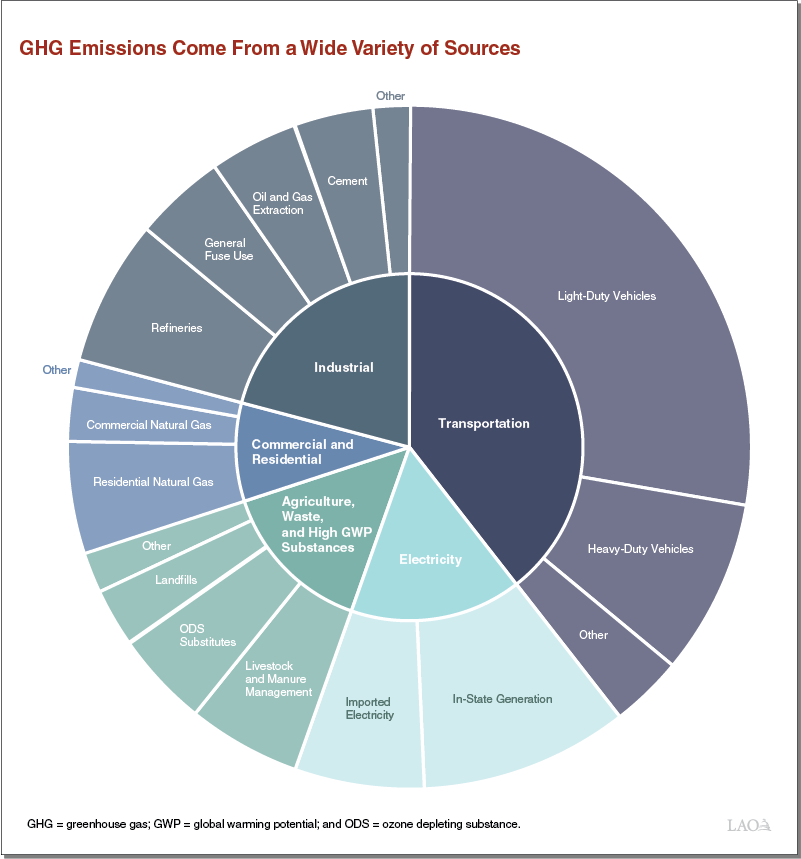
For more information, please see Air Resources Board Emissions Inventory
State Met 2020 GHG Goal Early, but 2030 Goal More Ambitious
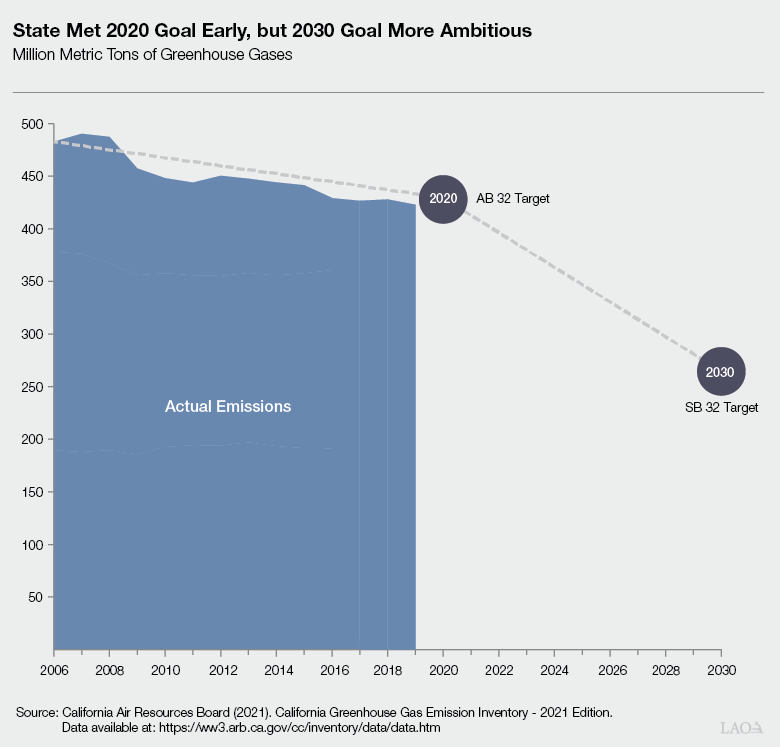
Electricity Is Biggest Driver of Emission Reductions So Far
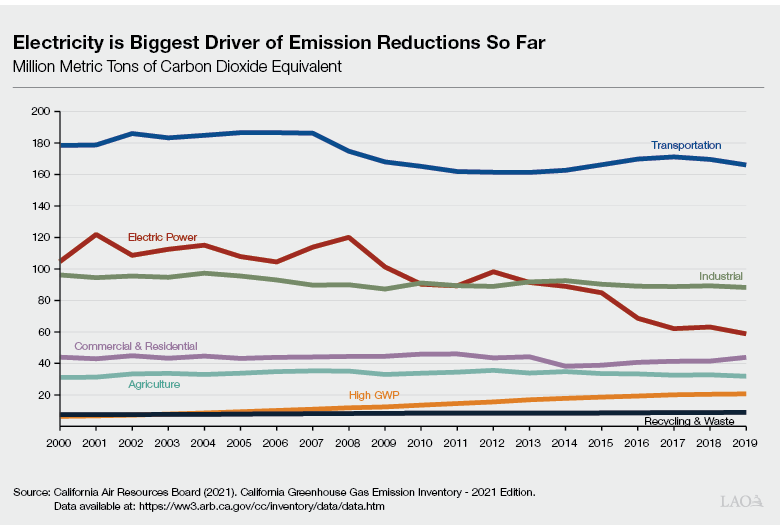
For more information, please see Assessing California’s Climate Policies—Electricity Generation
Major Policies to Meet Statewide Greenhouse Gas Limits
|
Cap‑and‑Trade. Regulation that establishes a “cap” on overall emissions from large emitters by issuing a limited number of permits (also known as allowances). Allowances can be bought and sold (traded), which creates a market price for allowances and an incentive for lowest cost reductions. |
|
|
Short‑Lived Climate Pollutants. Regulations and incentives intended to reduce certain types of emissions from dairies, landfills, and refrigeration equipment. |
|
|
Renewable Portfolio Standard. Regulations that require utilities to provide a certain percentage of electricity from qualifying renewable sources, such as wind and solar. |
|
|
Energy Efficiency. Regulations and financial incentives to encourage more efficient energy use in commercial buildings, homes, and manufacturing facilities. |
|
|
Low Carbon Fuel Standard. Regulation that requires transportation fuel suppliers to reduce the amount of greenhouse gases per unit of fuel used in California—also known as carbon intensity of fuels. |
|
|
Vehicle‑Related Programs. Regulations and incentives to encourage more efficient light‑ and heavy‑duty vehicles, as well as promote certain types of technologies such as electric vehicles. |
|
|
Vehicle Miles Traveled. Planning strategies and financial incentives intended to reduce the amount of light‑duty vehicle use through such things as increased transit and changes to land use. |
CAP-AND-TRADE
Cap-and-Trade Regulation Ensures Emissions Do Not Exceed Limit
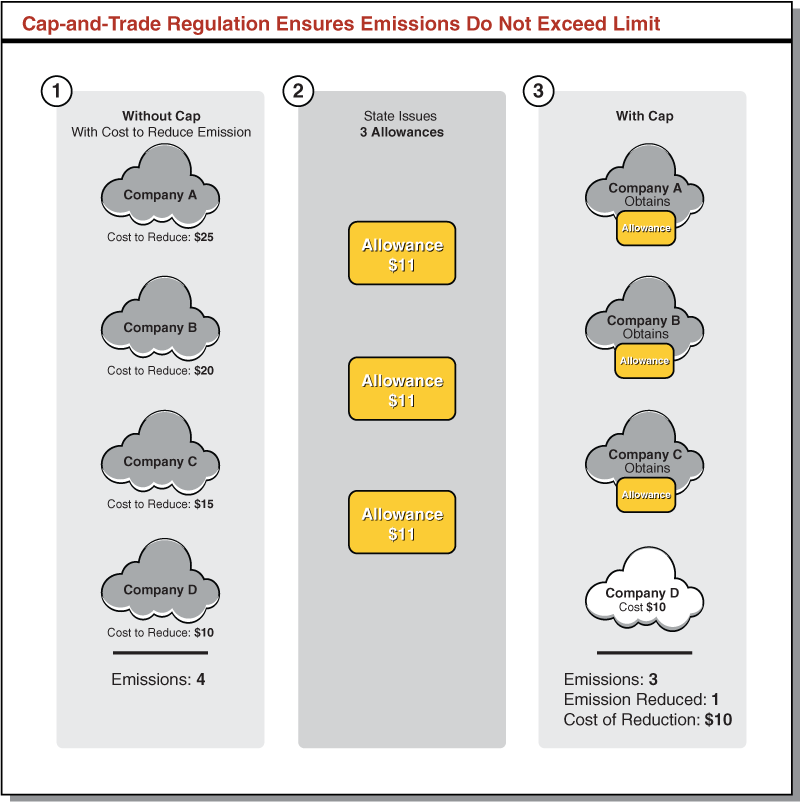
For more information, please see The 2017-18 Budget: Cap-and-Trade
State Revenue From Cap-and-Trade Auctions
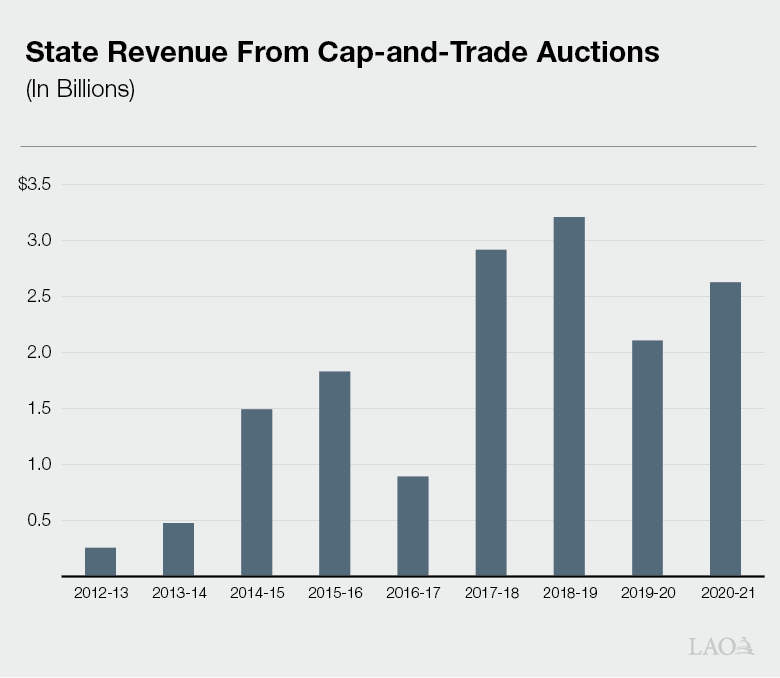
TRANSPORTATION GHG EMISSIONS
State Oversees Various Programs Designed to Reduce
Greenhouse Gas (GHG) Emissions in Transportation Sector
|
Light‑Duty Vehicle Programs |
|
|
|
|
|
|
|
Heavy‑Duty Vehicle Incentives |
|
|
|
|
|
Low Carbon Fuels |
|
|
Vehicle Miles Traveled |
|
ELECTRICITY GHG EMISSIONS
Summary of Major Policies to Reduce Emissions From Electricity Generation
|
Policy or Program |
Year Implemented |
Description |
|
SB 100 |
2018 |
Renewable and zero-carbon resources must supply 100 percent of all retail sales in California by 2045. |
|
Cap‑and‑trade |
2013 |
Beginning in 2013, electricity generators and importers required to obtain an allowance or offset to cover each ton of GHG emitted. Program includes other emitters outside of the electricity sector, and entities can buy and sell allowances. |
|
California Solar Initiative |
2007 |
$2.7 billion over a ten‑year period for financial incentives to reduce the cost of installing distributed solar, such as rooftop solar PV. |
|
Emissions Performance |
2007 |
Effectively prohibits LSEs from signing or extending long‑term contracts with coal power plants. |
|
Renewable Portfolio Standard |
2003 |
Requires LSEs to generate a minimum percent of retail electricity from qualifying renewable sources. Percentages increase over time from 20 percent in 2010 to 60 percent in 2030. |
|
Net Energy Metering |
1996 |
Program that encourages customers to install distributed solar generation by paying them a retail electricity rate for the electricity they generate. |
|
LSE = Load serving entity; PV = photovoltaic; SB 1368 = Chapter 598 of 2006 (SB 1368, Perata); and GHG = greenhouse gas. |
||
Electricity Generation Has Been Relatively Steady, but Emissions Intensity Has Declined Substantially
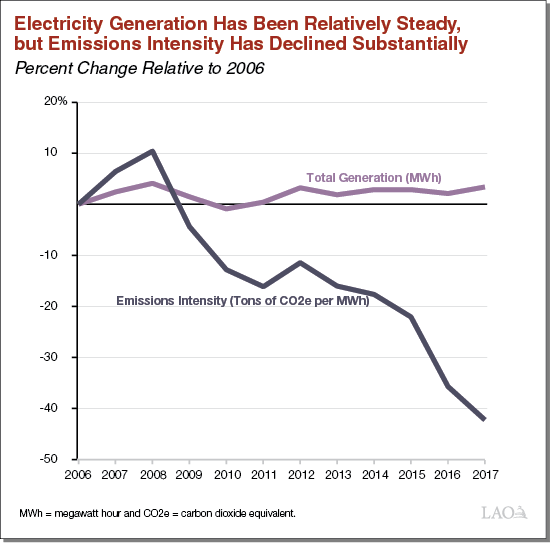
Last Updated: January 2022